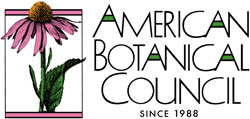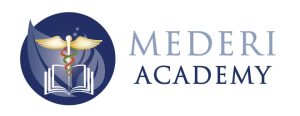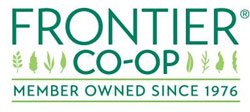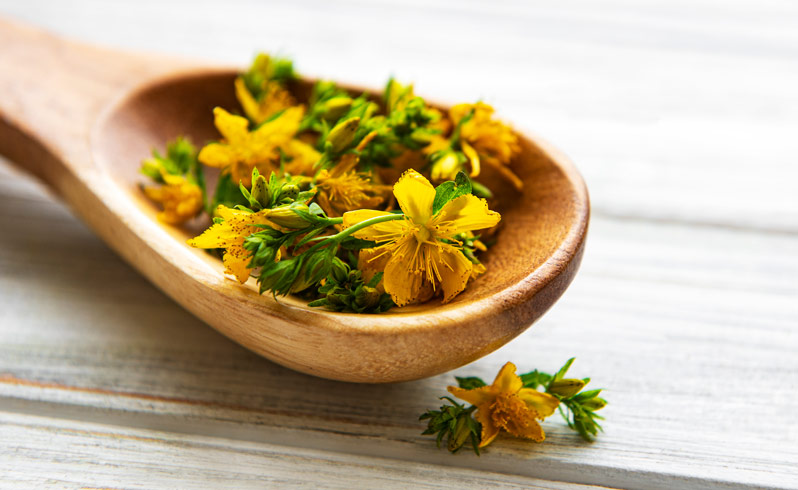
In an ever-changing world it can become a challenge to find our center. Each of us engages with our innate stress response differently, therefore creating many versions of what we term collectively as ‘anxiety’. Anxiety disorders are classified by DSM-V criteria, and categorized by experiencing excessive worry more days than not, restlessness, easy fatigue, difficulty with concentration, irritability, muscle tension and sleep disturbance all with difficulty in controlling any of these symptoms9. Anxiety disorders are often experienced uniquely by the individual with some symptoms remaining constant, others transient and some not present at all. Collectively containing the experience of anxiety into a single set of symptoms is limiting and does not offer a true reflection of the individual process. Ultimately, this may lead to ineffective treatment or improper use of SSRI’s, benzodiazepines and other conventional medications used to treat anxiety disorders simply from a viewpoint of central nervous system sedation.
Constitutional herbalism is the perfect avenue to aid in the clinical management and treatment of anxiety disorders due to its ability to tailor treatment to the individual. The use of herbal energetics can greatly alter the treatment course by addressing the constitutional imbalance within the individual contributing to anxiety disorder. Motivational interviewing and counseling techniques are imperative in understanding the etiology of the individual’s anxiety, so it may be characterized constitutionally. For example, anxiety may be primarily social with symptoms of excess heat such as flushing, tachycardia and sweating. The individual may not recognize anxiety is primarily triggered in social situations until asked to explain his/her experience. They may not be able to correlate their physical experience with a constitutional pattern, or be able to articulate there were somatic sensations at all until prompted for exploration. This article will focus on the herbal energetics of common medicinal herbs used to treat anxiety disorders and how to create formulas with this consideration.
The eight principles of TCM have long been used in traditional pulse diagnosis and can be utilized to assess the constitutional pattern. They consist of: yin/yang, exterior/interior, cold/heat, deficiency/repletion14. Ayurvedic patterns of pulse diagnosis and constitutional analysis may also be utilized to aid diagnosis. Tissue states are imperative to understanding the patient’s constitution and are characterized by hot/warm, dry, moist and cold/cool. This paradigm stems from the original humoral model created by the Greeks and translated further by Samuel Thomson to the three main tissue states of excitation, contraction and relaxation with the disease states translating to excess of the former three tissue states. Six central tissue states were further culminated by Dr. Joseph M. Thurston, including irritation, torpor, depression, atrophy, relaxation and constriction13.
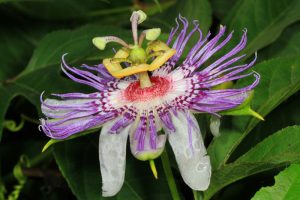
Passiflora incarnata, or Passionflower, has long been used to treat conditions of anxiety and nervousness with a keynote of mind-racing or cyclical thoughts. Passiflora has been tested against benzodiazepines in clinical trials particularly prior to surgical procedures and is shown to be fast-acting and produce similar efficacy mainly due to the constituent benzoflavone1. Passiflora is grounding, calms the shen, balances the vital life force energy and is slightly bitter and cooling10. This plant is most suitable for the constitutional pattern of heat, active mind, rapid pulse and in need of gentle and unique beauty which can be provided by the stunning visual of the flower itself. The presentation of excess mental energy via racing thoughts suggests an excess of the air element, and Passiflora would be suitable to ground this element, cool signs of heat such as flushing or tachycardia and would best be combined with a moistening herb such as Glycyrrhiza glabra or mushroom such as Ganoderma lucidum or Lentinula edodes.
Scutellaria lateriflora, also known as American or Mad-Dog Skullcap, is of great value in treating anxiety accompanied by great amounts of muscle tension due to its additional antispasmodic herbal action. Constitutional indications also include edginess, overstimulation, nervousness and tremor11. Both baicalin and its aglycone, baicalein, show affinity for the GABA-A receptor as an agonist, creating the plant’s anxiolytic and nervine properties as GABA is the main inhibitory neurotransmitter. GABA receptors are also utilized by common benzodiazepines, such as Alprazolam, to stimulate parasympathetic nervous system response and relaxation1. Both baicalin and baicalein are also found in different species of Scutellaria, most notably S. baicalensis, or Chinese Skullcap10. S. lateriflora is slightly bitter, sweet and cooling energetically10 so may benefit those with excess heat signs similar to Passiflora. The tissue state present may also benefit from an additional moistening herb as listed above for Passiflora. Muscle tension may also represent a dry tissue state due to loss of interstitial fluid to lubricate the fascia creating the conditions for adhesions, trigger points and tension in muscle tissue. The individual who needs S. lateriflora may present with tremor due to anxiety11, muscle tension in the neck, shoulders, or jaw and tendency to become overstimulated quickly.
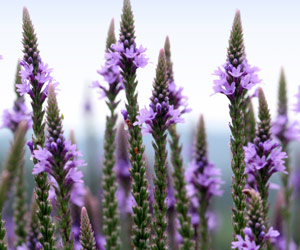
Verbena hastata, or Blue Vervain is one of the many species of vervain used by Western herbalists. There are many species of Verbena typically in the western United States. It is a brilliant antispasmodic as well as a nervine, with affinity for tension of the neck and shoulders, exhaustion of the mind, often accompanied with GI stress12. For many, GI distress is strongly linked with anxiety due to the gut-brain axis, an interconnected nervous network consisting of the enteric nervous plexus and intertwining vagal nerve pathways2. Formulating with botanicals containing both GI and nervous system affinity is crucial for patients with physical manifestations of anxiety such as IBS and visceral hypersensitivity. The nervous system is typically associated with the element of air in Ayurveda, and the plant itself tends to be drying, cooling and bitter. Therefore, to balance the constitution a moistening and warming herb from a TCM perspective, such as Panax ginseng or Withania somnifera would fit the mental exhaustion piece of the constitutional picture without overly drying the individual and would benefit formulation.
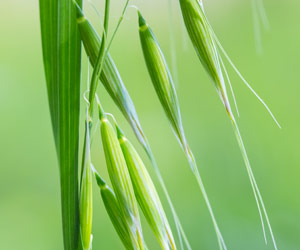
Avena sativa, or Milky Oat Seed is a nervine and nervous system trophorestorative indicated for an overworked central nervous system often with concomitant depression4. Usually the individual is in such a state of depletion the entirety of the constitution is suppressed. This picture fits with the building nature of Avena, and its neutral, moistening energetics. Large doses will not tip the constitution out of balance, but instead nourish and restore the central nervous system and individual. Due to its neutrality it pairs well with other nervines that are either warming or cooling to balance the formula (Valeriana, Matricaria). Due to its demulcent qualities4 it makes an astute formula base for an overly dry constitution.
Hypericum perforatum, or St. John’s Wort, has been used for centuries, dating back to earliest uses around the 1st century AD8. Not only a nervine, but a classic anti-depressant, this herb is often disregarded due to its interaction with CYP450 enzyme metabolism system, and its ability to upregulate excretion of medications utilizing the same pathway4. Most of the concern originates from a clinical trial demonstrating the upregulation of drug excretion of cyclosporine in cardiac transplant patients leading to rejection. It has since been determined plant extracts higher in the photosensitizing constituents, hyperforin and hypericin, were most responsible for these pharmacokinetic effects, but it cannot be disputed most plant compounds work synergistically at best and not as isolates. Therefore, it is best to use caution in patients taking Hypericum preparations with >1mg hyperforin concomitantly with certain medication classes and maximum 5-10mg hypericin daily 7. Clinically, Hypericum is most indicated for anxiety with depression and any iteration of nerve pain, including numbness, paresthesia or damage to the nervous system from trauma or neuropathy4. This presentation coincides with the tissue state of irritation due to the sensitivity to pain and pain pattern present13. Hypericum would best be paired with a nervous system trophorestorative such as Avena or Hericium erinaceus and a warming adaptogen or nervine such as Withania somnifera, Panax ginseng, Astragalus membranaceus or Valeriana officinalis.
Crataegus spp., or Hawthorn is generally thought of as a cardiovascular tonic, but is of great use in anxiety states presenting with palpitations, insomnia, grief and heaviness of the heart. Palpitations, sweating and chronic adrenal stress are all characterizations of sympathetic dominance, which Crataegus may also address1. Berry, leaf and flower can all be used, with most recent studies indicating higher concentrations of flavonoids in the leaf and flower4.
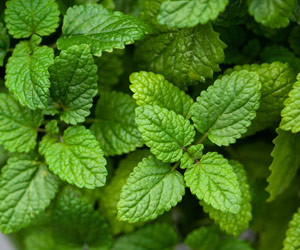
Crataegus is both sweet and sour as well as astringent and slightly warming, with the effect of calming the shen, or heart-mind in TCM3. The individual needing Crataegus may have anxiety due to heartbreak, structural weakness of the heart, palpitations or an excess of the air element or heat with a need to ground and strengthen the shen throughout the body. Due to its energetics, the formula may benefit with the addition of a cooling bitter nervine such as Passiflora or a cooling sweet nervine such as Melissa officinalis.
In conclusion, when formulating for patients experiencing anxiety, it is best to consider the following: constitution of the patient determined by TCM, Ayurveda or humoral patterns, energetics of the lead botanical as well as additional botanicals in formula and the synergy of how each botanical will work in concert. Formulating with the constitution in mind prevents excess of any elemental dominance such as heat, cold, wind or damp as a pattern within the body and is an informed way of bringing the body into a state of balance rather than pushing the pattern deeper within the system. Allowing the complex synergy of plants to interact with the DNA and process of the individual is imperative to cultivating a beneficial therapeutic relationship between plant and person.
Related audio series: Clinical Management of Anxiety and Depression
Note: The information on this site is provided as a research resource for health professionals and is not intended to replace diagnosis and treatment by a qualified health care practitioner. Consult your medical care provider before using any herbal medicine.
 Meet Our Contributor:
Meet Our Contributor:
Alexandra Mele, ND is a Resident Physician at the Southwest College of Naturopathic Medicine in Tempe, AZ. She enjoys treating women’s health, mental health, autoimmune disease and gastrointestinal disorders primarily with the modality of botanical medicine. Her primary interest is to practice naturopathic medicine with a Vitalist philosophy and constitutional herbalism. She is working towards becoming a Registered Herbalist with the AHG and enjoys wildcrafting herbs, music, energetic healing modalities, research, nature and cooking with medicinal plants and wild foods. Instagram: @nightbloom_herbal Websites: https://patients.scnm.edu/faculty/alexandra-mele/ and https://www.treatthegut.com/
References:
1. Bone K. Functional Herbal Therapy : A Modern Paradigm for Western Herbal Clinicians. Stylus Publishing, London Aeon Books; 2021.
2. Carabotti M, Scirocco A, Maselli MA, Severi C. The gut-brain axis: interactions between enteric microbiota, central and enteric nervous systems. Ann Gastroenterol. 2015 Apr-Jun;28(2):203-209. PMID: 25830558; PMCID: PMC4367209.
3. DiPasquale, Robin. The Spirit That Resides in the Heart. Naturopathic Doctor News and Review. Accessed July 12, 2022. https://ndnr.com/botanical-medicine/the-spirit-that-resides-in-the-heart/
4. Hoffmann D. Medical Herbalism – Principles and Practices. Inner Traditions Bear And Comp; 2003.
5. Metzman, Helen Lowe. Botanical Nomenclature. https://www.americanherbalistsguild.com/files/journal/V7N1_Scutellaria.pdf
6. Moore M. Medicinal Plants of the Mountain West. Museum Of New Mexico Press; 2003.
7. Nicolussi S, Drewe J, Butterweck V, Meyer zu Schwabedissen HE. Clinical relevance of St. John’s wort drug interactions revisited. British Journal of Pharmacology. 2019;177. doi:10.1111/bph.14936
8. Pöldinger W. Zur Geschichte des Johanniskrauts [History of St. Johns wort]. Praxis (Bern 1994). 2000;89(50):2102-2109 (SJW)
9. Substance Abuse and Mental Health Services Administration. Impact of the DSM-IV to DSM-5 Changes on the National Survey on Drug Use and Health [Internet]. Rockville (MD): Substance Abuse and Mental Health Services Administration (US); 2016 Jun. Table 3.15, DSM-IV to DSM-5 Generalized Anxiety Disorder Comparison. Available from: https://www.ncbi.nlm.nih.gov/books/NBK519704/table/ch3.t15/
10. Thompson, Krystal. Passionflower Monograph. HerbRally. https://www.herbrally.com/monographs/passionflower
11. Wood M, Ryan D. The Earthwise Herbal Repertory : The Definitive Practitioner’s Guide. North Atlantic Books; 2016.
12. Wood M. The Book of Herbal Wisdom : Using Plants as Medicine. North Atlantic Books; 1998.
13. Wood M. The Energetics of Physiomedica Lism the Six Tissue States. https://www.americanherbalistsguild.com/files/journal/Vol%203%20No%201/Six%20Tissue%20States.pdf
14. Wu HK, Ko YS, Lin YS, Wu HT, Tsai TH, Chang HH. The correlation between pulse diagnosis and constitution identification in traditional Chinese medicine [published correction appears in Complement Ther Med. 2017 Dec;35:145]. Complement Ther Med. 2017;30:107-112. doi:10.1016/j.ctim.2016.12.005 (TCM)



